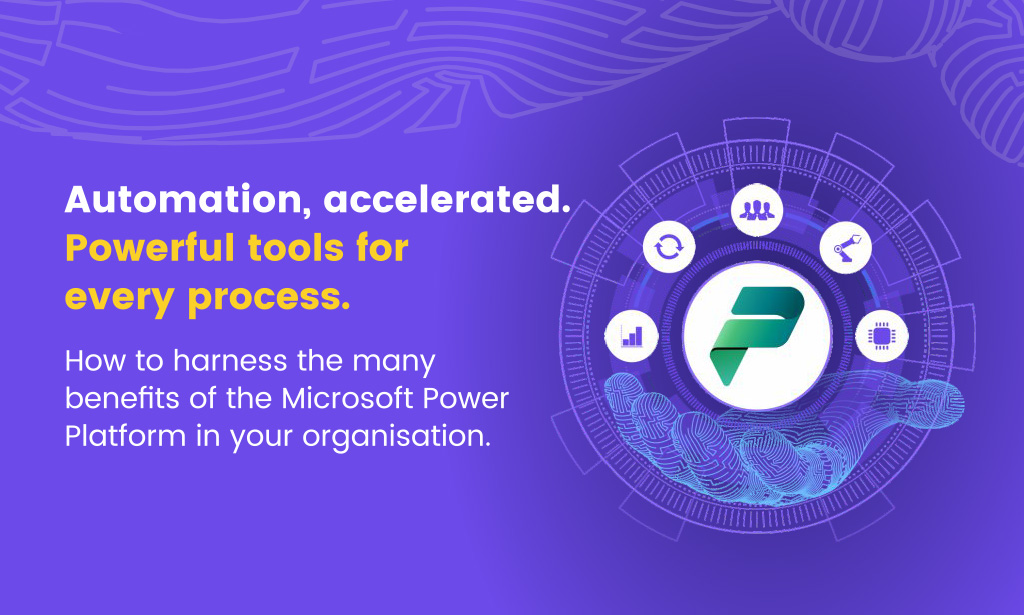In healthcare, Robotic Process Automation creates efficiencies that free up time to focus on enhancing patient care. This blog takes you through the what, how and why of Robotic Process Automation in healthcare, provides some real-life examples of processes ripe for automation and details some of the benefits and results that can be achieved.

What is RPA?
Robotic Process Automation (RPA) is a technology that uses virtual robots to perform specific, repeatable tasks using digital systems. These robots mimic the steps that a human would take, but they can work day and night, completing tasks accurately and consistently. In simple terms, RPA is like having a tireless virtual assistant that can perform routine tasks without making mistakes or needing a break.
RPA robots are trained to automatically execute work using an organisation’s existing IT systems. They are capable of interacting with these systems at the user interface (front end) level, much like a human user, as opposed to the application programming interface (back end), ensuring an adaptable, quickly deployable and cost-efficient technology.
When RPA is strategically implemented, healthcare providers can modernise a wide range of processes without having to replace the enterprise software platforms or applications that are critical to the daily provision of quality patient care.
For a detailed review of the challenges faced in the healthcare sector and how intelligent automation can help to alleviate these, download our free whitepaper.
How RPA works in healthcare automation
In a healthcare context, RPA can automate a vast array of tasks and seamlessly manage data across various platforms. In essence, RPA serves as a bridge between various software systems within a healthcare provider’s operation. It can transfer and synchronise data between different applications, ensuring that information is consistently updated and accurate throughout the organisation.
For instance, if a patient’s contact details change, RPA can ensure this updated information reflects across all relevant platforms, like billing and medical records, without staff having to manually update each system. As more and more manual tasks are handed off to RPA, people can channel their focus on more strategic and patient-centric activities.

Automation in healthcare: opportunities for implementing RPA
Healthcare robotic process automation has emerged as an efficient conductor of many different types of tasks to ensure accuracy, timeliness and seamless communication both internally and with patients. All these outcomes enhance overall healthcare delivery.
Here are some examples of how RPA can drive healthcare process improvement:
Patient management:
- Schedule appointments using predefined rules, considering clinician availability and patient preferences.
- Send automated reminders to patients via email, text or even voice calls to reduce missed appointments and enable easy rescheduling.
- Disseminate discharge instructions to patients, ensuring they receive critical information promptly and consistently.
- Facilitate automated follow-ups, ensuring post-discharge care and compliance, by sending reminders and checklists to both patients and providers.
Financial management:
- Generate, send, and track invoices, ensuring timely payments and managing follow-ups for overdue bills.
- Perform regular audits of EHR entries, ensuring that they comply with regulatory standards and highlighting discrepancies for review.
Employee management:
- Assist in employee onboarding by automating the setup of IT access, email accounts, and training schedule creation, ensuring a smooth integration of new staff into the system.
- Automate responses to common HR-related queries, including leave balance, payroll, and benefits questions.
- Handle routine IT requests like password resets, access issues and basic troubleshooting, enhancing response times.
Clinical operations and co-ordination:
- Auto-fill forms, such as patient admission forms, using predefined rules and structured data, reducing administrative efforts.
- Ensure that lab results are automatically uploaded to patient records, triggering alerts for healthcare providers when results are available or if anomalies are detected.
- Automate care coordination tasks like sending patient data to relevant departments, ensuring the right providers have access to pertinent information; or automate the transfer of care summaries and treatment plans to relevant healthcare professionals.
Data management:
- Migrate data between EHR systems or from legacy systems, ensuring data consistency and availability.
Pharmacy and inventory management:
- Check the accuracy of prescriptions, validate patient details, send automated prescription refill requests to healthcare providers, and alert patients when prescriptions are ready for pickup or have been shipped.
- Keep a real-time check on stock levels of medical supplies and medications – automatically re-ordering supplies when inventory drops below a certain level.
Benefits of RPA in healthcare
Time and cost savings
Healthcare automation can deliver substantial economic and operational efficiencies. One health authority that deployed UiPath RPA was able to reduce data registration from 10 minutes to 2 minutes per patient. This shift not only streamlined the data entry process but also translated to an annual saving of 14,000 hours of work for the medical staff.
Greater accuracy and consistency
Robots follow explicit instructions, so processes are carried out the same way each time. This helps to standardise and streamline workflows across the healthcare environment.
In an RPA project that was implemented in a primary care setting, GP practices across two boroughs in Northwest London were able to standardise their annual recall processes for patients with diabetes. A key outcome was a substantial reduction in incorrect patient recall.
Enhanced patient and employee experience
As healthcare professionals delegate more repetitive and rules-based tasks to software robots, they can allocate more time to engage in patient-centered activities and responsibilities that require their specialised skills and human touch. This includes areas demanding medical expertise, critical and analytical thinking, or interpersonal and communication skills.
Implementing an effective automation strategy can have a cascading positive effect, enhancing productivity, boosting morale, and improving both patient and employee satisfaction and retention over time.
Regulatory and compliance considerations
When introducing any technology into the healthcare sector, it is critical to ensure compliance with regulatory standards such as the GDPR in the UK and Europe, and HIPAA in the United States. The core purpose of these regulations is to safeguard sensitive patient data; and a structured approach to RPA can actively improve compliance and data security in healthcare operations.
RPA naturally follows specific, predefined rules, and these rules can be easily updated whenever laws change. Therefore, data is always processed in a way that adheres to the latest regulatory standards. This reduces the potential for human error, which is often associated with data breaches or non-compliance.
Also, RPA inherently provides a transparent and auditable trail of all data interactions, which is critical for demonstrating regulatory compliance. Each interaction with the data by RPA robots is logged systematically, offering clear visibility and traceability of data usage and transfers.
Looking to the future
Innovations in RPA are rapidly emerging, ranging from bots capable of conducting complex data analysis to those enabling enhanced patient interaction. By staying abreast of these advancements and understanding how they can be integrated into current systems, healthcare providers can ensure that they are not only keeping pace with technological evolution but also maximising the efficiency and efficacy of their services.
For instance, incorporating emerging technologies such as AI and machine learning (ML) into RPA can significantly advance automation in healthcare, enabling the handling of more complex, data-driven tasks. Clinicians could, for example, be assisted by Generative AI chatbots that can understand and respond to patient enquiries, or transcribe detailed and accurate clinical notes in real-time, reducing administrative workload.
Ensuring a practical and systematic approach towards adopting RPA, while being mindful of emerging trends and innovations, will pave the way for healthcare providers to deliver higher-quality care and continue scaling to meet demand.
The team at jaam have worked with numerous healthcare providers to automate a range of processes aimed at increasing efficiency and enhancing patient care. Read our e-book, whitepaper or case studies for more detail, or get in touch to chat through the challenges you face in your own healthcare practice, and how automation can help.




